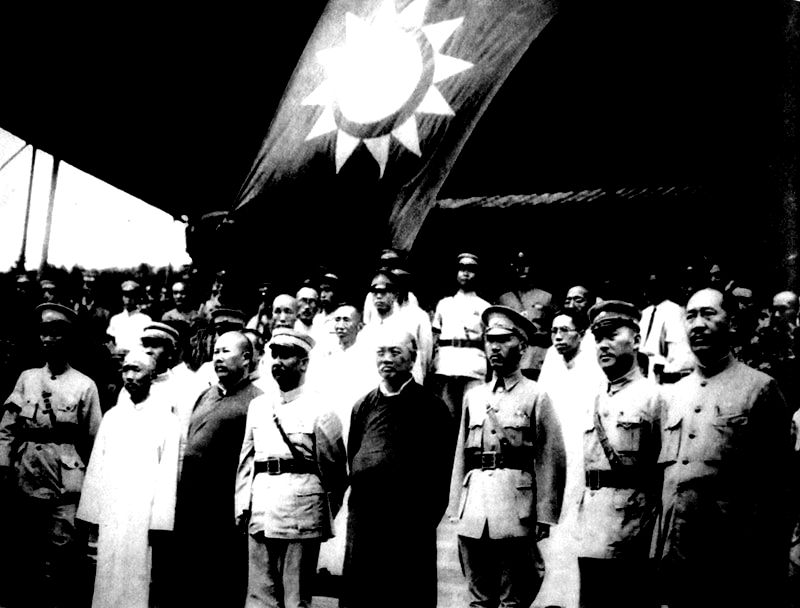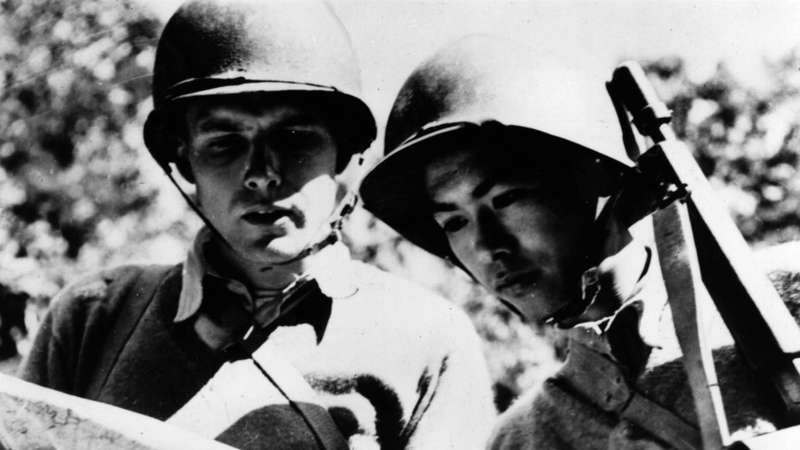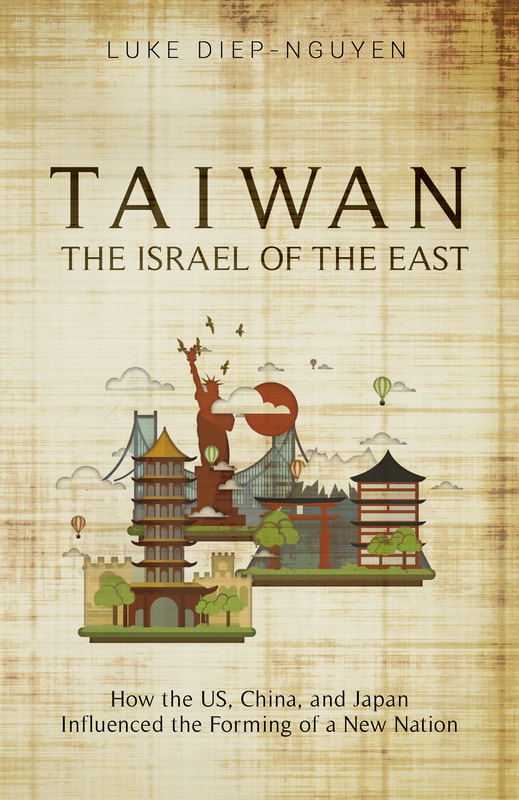- Home
- Stories
-
Internship
- Summer 2024 Internship
- Summer 2023 Internship
- Fall 2022 Internship
- Summer 2022 Internship
- Summer 2021 Internship
- Fall 2020- Spring 2021 Internship
- Summer 2020 Internship
- Fall 2019 Internship
- Summer 2019 Internship >
- School Year 2018-2019 Internship
- Summer 2018 Internship >
- Fall 2017 Internship
- Summer 2017 Internship >
- Books
- Archives
-
Resource Page
-
Supplementary Research Guides
>
- Unit 731 - Guide >
-
Philippines' Resistance - Guide
>
- Philippines World War II Timeline
- The Japanese Invasion & Conquest of the Philippines
- Bataan Death March
- Formation of Underground Philippines Resistance
- Supplies of the Guerrilla Fighters
- The Hukbalahap
- Hunter's ROTC
- Marking's Guerrillas
- United States Army Forces in the Philippines of Northern Luzon (USAFIP-NL)
- The Aetas
- Chinese and Filipino-Chinese Nationalist Guerrilla Units
- The Female Faces of the Philippine Guerrillas
- Rising Sun Flag - Guide >
- Pinay Guerrilleras - Guide >
- Fall of Singapore - Guide >
- Three Years and Eight Months - Guide >
- Siamese Sovereignty - Guide >
- The Khabarovsk War Crimes Trial - Guide >
- Unit 731 Cover-up : The Operation Paperclip of the East - Guide >
- Marutas of Unit 731 - Guide >
- Prince Konoe Memoir - Guide >
- Competing Empires in Burma - Guide >
- Battle of Shanghai - Guide >
- Ishi Shiro - Guide >
- Taiwan The Israel of the East - Guide >
- Seeking Justice for Biological Warfare Victims of Unit 731 - Guide >
- Rice and Revolution - Guide >
- Clash of Empires - Guide >
-
Hunger for Power and Self-SufficiencyI - Guide
>
- The Influence of War Rations on Post-War Culinary Transformations
- How World War II Complicated Food Scarcity and Invention
- American Military Innovations
- Government-Sponsored Food Inventions in Europe during World War II
- Feeding the Army: The Adaptation of Japanese Military Cuisine and Its Impact on the Philippines
- Mixed Dishes: Culinary Innovations Driven by Necessity and Food Scarcity
-
Denial A Quick Look of History of Comfort Women and Present Days’ Complication - Guide
>
- The Comfort Women System and the Fight for Recognition
- The Role of Activism and International Pressure
- The Controversy over Japanese History Textbooks
- The Sonyŏsang Statue and the Symbolism of Public Memorials
- Activism and Support from Japanese Citizens
- The Future of Comfort Women Memorials and Education
- Echoes of Empire: The Power of Japanese Propaganda - Guide >
- Lesson Plans >
-
Supplementary Research Guides
>
The Kuomintang Movement
The Kuomintang (KMT) movement, formed and led by Sun Yat-sen, who is known as the father of modern China. The KMT concept and its leaders had many Western qualities since they were educated in Western countries and were followers of Christianity. After Sun Yat-sen passed away, Chiang Kai-shek became the leader of the KMT.
The Communist Party, introduced in 1920, emerged as a primary concern and focus of Chiang Kai-shek’s efforts. Before Japan’s invasion, Chiang Kai-shek spent over a billion Chinese yuan in six military expeditions against the Communist Party as an attempt of a civil war. The communists, while not politically or militarily superior, consistently fended off KMT assaults and opposed the KMT Government’s imposition and rule over the peasants.
Japan’s interests in China formed around an increasing need for alternative and expanding need for resources. Japan wanted to modernize China, as it had with Taiwan, and planned to manipulate and industrialize and advance China’s production rates. In particular, China’s rice industry would benefit Japan’s industrial and economic growth. China’s mineral wealth was another essential appeal to Japan’s imperialist goals. Japan wanted to survey and take advantage of its coal, iron, and ore. As an essential asset to Japan’s interests, Manchuria, bordering China and the Soviet Union, was vital for Japan’s occupation as it guarded against any possible assistance the Chinese might receive from the Soviet Union.49 Though many journalists during the 1930s believed that Japan would use China solely for economic and industrial resources, Japan’s anti-Chinese superiority complex but also resulted in the oppression and attempted extermination of the Chinese population.
The Communist Party, introduced in 1920, emerged as a primary concern and focus of Chiang Kai-shek’s efforts. Before Japan’s invasion, Chiang Kai-shek spent over a billion Chinese yuan in six military expeditions against the Communist Party as an attempt of a civil war. The communists, while not politically or militarily superior, consistently fended off KMT assaults and opposed the KMT Government’s imposition and rule over the peasants.
Japan’s interests in China formed around an increasing need for alternative and expanding need for resources. Japan wanted to modernize China, as it had with Taiwan, and planned to manipulate and industrialize and advance China’s production rates. In particular, China’s rice industry would benefit Japan’s industrial and economic growth. China’s mineral wealth was another essential appeal to Japan’s imperialist goals. Japan wanted to survey and take advantage of its coal, iron, and ore. As an essential asset to Japan’s interests, Manchuria, bordering China and the Soviet Union, was vital for Japan’s occupation as it guarded against any possible assistance the Chinese might receive from the Soviet Union.49 Though many journalists during the 1930s believed that Japan would use China solely for economic and industrial resources, Japan’s anti-Chinese superiority complex but also resulted in the oppression and attempted extermination of the Chinese population.
Kuomintang Members pay tribute to the Sun Yat-sen Mausoleum in Beijing in 1928.
Upon establishing a government in China and signing a treaty establishing anti-communist and Chinese-Japanese collaborative ideas, the Japanese government used the plans to form new policies for its Chinese puppet government. The new policies were proposed to put an end to attempts to resist the Japanese and have China as a strategic position for Japan as well as means to gain material resources for the support in the fight against the Western nations. Japan also wanted to use its newly established puppet government to aid its efforts against communism in China and prevent its spread throughout Asia, as it represented a threat to their goal for the Greater East Asia Co-Prosperity Sphere.
Japan’s Greater East Asia Co-Prosperity Sphere was the concept that Japan would unite all of Asia under the control of its new policies and influences. Under these new policies, Japan would gain the capabilities to utilize the conquered territories’ economic and material wealth and oppress native populations. In China, the head of the puppet government was Wang Ching-wei, a former Kuomintang leader and compatriot of Sun Yat-sen. Wang, under Japanese support and supervision, built his regime on policies designed by the Japanese and formed a centralized government based in the Chinese capital of Nanjing as mandated by the Japanese government in Tokyo.50 China was not only used to provide Japan with supplies, Japan also exerted influence over China’s population. It became a practical ground for Japan to test plans to change China’s political, social, economic, and industrial structure to benefit Japan’s growth. China served as an important test subject due to its more centrally structured society, and Japan wanted to test Western nations’ reactions to this exploitation before hitting Western colonies located in the Pacific.
Japan’s Greater East Asia Co-Prosperity Sphere was the concept that Japan would unite all of Asia under the control of its new policies and influences. Under these new policies, Japan would gain the capabilities to utilize the conquered territories’ economic and material wealth and oppress native populations. In China, the head of the puppet government was Wang Ching-wei, a former Kuomintang leader and compatriot of Sun Yat-sen. Wang, under Japanese support and supervision, built his regime on policies designed by the Japanese and formed a centralized government based in the Chinese capital of Nanjing as mandated by the Japanese government in Tokyo.50 China was not only used to provide Japan with supplies, Japan also exerted influence over China’s population. It became a practical ground for Japan to test plans to change China’s political, social, economic, and industrial structure to benefit Japan’s growth. China served as an important test subject due to its more centrally structured society, and Japan wanted to test Western nations’ reactions to this exploitation before hitting Western colonies located in the Pacific.
Support to China
In 1936, Chiang strengthened his anti-Japanese feelings following increased Japanese military actions and the dismantling of the Kuomintang Congress and Nationalist Party. He ultimately announced his determination to combat the Japanese military and lead Chinese military forces against them. By December 1936, Chiang had gained the support of the Chinese population and was widely viewed as the national leader of China. During the same time, the Japanese Government assigned Ambassador Shigeru Kawagoe to China to open negotiations. Even though both China and Japan had become militarily engaged, diplomatic discussions and negotiations between the two countries continued in an attempt to reach peaceful alternatives. Kawagoe started with a list of demands requested from China. These demands included allowing a commercial airline between China and Japan, cooperating in controlling Korean revolutionaries and anti-Japanese activities, and hiring Japanese advisers. The claims and counterclaims discussed between China and Japan became the foundation for their new relationship. Negotiations and diplomacy addressed and assessed the relations and demands between Chinese and Japanese authorities. China agreed to reform its tariffs by putting pressure on smugglers and accepting Japanese advisers. Despite intentions from the Chinese to cooperate and negotiate with Japan, Chiang Kai-shek and the Chinese population had grown stronger in their determination to endure and withstand the Japanese military. First, Japan’s constant acts of aggression slowly unified and reinforced the national identity and goals of the Chinese population. The Chinese national force strengthened and became more organized due to the rising anti-Japanese attitude and a passionate hatred toward the Japanese. These feelings under a strong leader led to a surge of self-confidence in China’s own strength and capability.
America’s goal to provide support to China was because China’s stability and struggle against the Japanese were outstanding. China had geological and geopolitical importance, as well as military, social, and cultural significance. For the U.S., China was strategically important because in continuing to resist, the Japanese would have devoted vast resources in maintaining control over China. The Japanese would lack the resources to fight the U.S., which had developed an idealized, positive view of China and the Nationalist Government, despite its corruption and incompetence. The U.S. supported the Chinese with arms, oil, gasoline, ships, vehicles, and aircraft, as well as experienced military advisers and pilots, which would provide air support for the Chinese to combat the Japanese. While the U.S. continued to remain militarily, economically, and politically neutral in the war, it dispatched retired Air Corps Tactical School instructor and pilot Claire Chennault to China to be Chiang Kai-shek’s the acting advisor. In 1940 and 1941, Chennault was sent nearly 100 volunteer pilots and 200 ground crews along with 100 P-40s to form the American Volunteer Group, later known as the “Flying Tigers,” which would engage with the Japanese Air Force and target Japanese military installations, supply convoys, and troop movements. From December 1941 to July 1942, the Flying Tigers downed almost 300 Japanese planes and cost the Japanese 1,500 men. In contrast, the Flying Tigers lost 12 airplanes and ten pilots in combat and another three pilots and 61 planes on the ground. The victories of Flying Tigers helped boost China’s morale and stun Japanese movements. It was not only the Western nations and their Pacific Asian colonies, China, and Japan to be heavily impacted by the war in the Pacific. Along with the islands under U.S. invasion in their campaign against Japan, Taiwan, a Japanese colony and major economic and industrial resource, became a primary strategic bombing target for the Americans. Kay Chen, who lived on the Penghu Islands during the war, witnessed her hometown, Magong, bombed frequently by American planes. Kay’s family had a private bunker next to her mother’s temple, where attackers tried to avoid hitting, but many bombs hit near her home nevertheless.
The cooperation and alliance between the U.S. and China became a decisive factor in the victory over Japan in a brief amount of time. The relationship between the two countries also affected their actions and motives going into the Cold War era. The U.S., as a significant ally and supporter of the Nationalist Government, looked for potential sanctuary bases for Nationalists who fled the overwhelming Communist forces, which had gained strength and public support following the war against the Japanese and the corrupt Nationalist Government. The U.S. and Nationalist Government decided on Taiwan as a prominent base for the Nationalists and anti-Communist Chinese. With the backing of General Douglas MacArthur, Supreme Commander for the Allied Powers, and the U.S. military and government, in early October 1949 Nationalist Revolutionary leaders Chiang Kai-shek and Chen Chong established themselves and their supporters in Taiwan. MacArthur’s advisors to Chiang Kai-shek recommended reformation within the Taiwanese Government. As a result, Chen Chong and Chinese political figure, K. C. Wu, became head of the military and civil administrations in Taiwan, respectively.
The cooperation and alliance between the U.S. and China became a decisive factor in the victory over Japan in a brief amount of time. The relationship between the two countries also affected their actions and motives going into the Cold War era. The U.S., as a significant ally and supporter of the Nationalist Government, looked for potential sanctuary bases for Nationalists who fled the overwhelming Communist forces, which had gained strength and public support following the war against the Japanese and the corrupt Nationalist Government. The U.S. and Nationalist Government decided on Taiwan as a prominent base for the Nationalists and anti-Communist Chinese. With the backing of General Douglas MacArthur, Supreme Commander for the Allied Powers, and the U.S. military and government, in early October 1949 Nationalist Revolutionary leaders Chiang Kai-shek and Chen Chong established themselves and their supporters in Taiwan. MacArthur’s advisors to Chiang Kai-shek recommended reformation within the Taiwanese Government. As a result, Chen Chong and Chinese political figure, K. C. Wu, became head of the military and civil administrations in Taiwan, respectively.
Related Book
Taiwan, the Israel of the East:
|
|
Pacific Atrocities Education
730 Commercial Street San Francisco, CA 94108 415-988-9889 |
Copyright © 2021 Pacific Atrocities Education.
We are a registered 501 (c)(3) charity. |
- Home
- Stories
-
Internship
- Summer 2024 Internship
- Summer 2023 Internship
- Fall 2022 Internship
- Summer 2022 Internship
- Summer 2021 Internship
- Fall 2020- Spring 2021 Internship
- Summer 2020 Internship
- Fall 2019 Internship
- Summer 2019 Internship >
- School Year 2018-2019 Internship
- Summer 2018 Internship >
- Fall 2017 Internship
- Summer 2017 Internship >
- Books
- Archives
-
Resource Page
-
Supplementary Research Guides
>
- Unit 731 - Guide >
-
Philippines' Resistance - Guide
>
- Philippines World War II Timeline
- The Japanese Invasion & Conquest of the Philippines
- Bataan Death March
- Formation of Underground Philippines Resistance
- Supplies of the Guerrilla Fighters
- The Hukbalahap
- Hunter's ROTC
- Marking's Guerrillas
- United States Army Forces in the Philippines of Northern Luzon (USAFIP-NL)
- The Aetas
- Chinese and Filipino-Chinese Nationalist Guerrilla Units
- The Female Faces of the Philippine Guerrillas
- Rising Sun Flag - Guide >
- Pinay Guerrilleras - Guide >
- Fall of Singapore - Guide >
- Three Years and Eight Months - Guide >
- Siamese Sovereignty - Guide >
- The Khabarovsk War Crimes Trial - Guide >
- Unit 731 Cover-up : The Operation Paperclip of the East - Guide >
- Marutas of Unit 731 - Guide >
- Prince Konoe Memoir - Guide >
- Competing Empires in Burma - Guide >
- Battle of Shanghai - Guide >
- Ishi Shiro - Guide >
- Taiwan The Israel of the East - Guide >
- Seeking Justice for Biological Warfare Victims of Unit 731 - Guide >
- Rice and Revolution - Guide >
- Clash of Empires - Guide >
-
Hunger for Power and Self-SufficiencyI - Guide
>
- The Influence of War Rations on Post-War Culinary Transformations
- How World War II Complicated Food Scarcity and Invention
- American Military Innovations
- Government-Sponsored Food Inventions in Europe during World War II
- Feeding the Army: The Adaptation of Japanese Military Cuisine and Its Impact on the Philippines
- Mixed Dishes: Culinary Innovations Driven by Necessity and Food Scarcity
-
Denial A Quick Look of History of Comfort Women and Present Days’ Complication - Guide
>
- The Comfort Women System and the Fight for Recognition
- The Role of Activism and International Pressure
- The Controversy over Japanese History Textbooks
- The Sonyŏsang Statue and the Symbolism of Public Memorials
- Activism and Support from Japanese Citizens
- The Future of Comfort Women Memorials and Education
- Echoes of Empire: The Power of Japanese Propaganda - Guide >
- Lesson Plans >
-
Supplementary Research Guides
>


